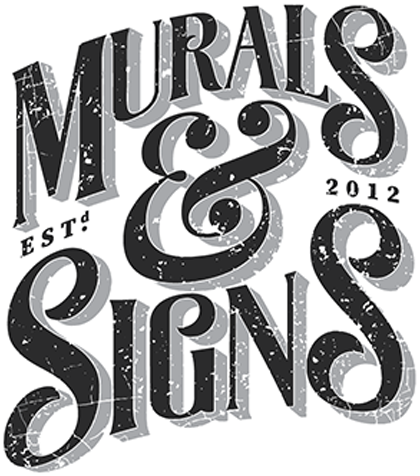In the ever-evolving world of sign painting, the clash between traditional craftsmanship and cutting-edge digital tools has ignited a compelling debate. As businesses strive to capture attention in a visually saturated market, the choice between traditional and digital methods becomes crucial. This article delves into the intricate realm of commercial sign painting, dissecting the advantages and disadvantages of both traditional and digital approaches.
The Time-Honored Techniques of Traditional Sign Painting
In an era marked by technological advancements, traditional sign painting stands as a testament to time-honored techniques. Artisans skilled in hand-painting signs bring a distinct human touch to their creations, infusing each stroke with personality and character.
Craftsmanship and Personalization
Traditional sign painting embodies a level of craftsmanship that digital tools struggle to replicate. A skilled sign painter meticulously crafts each detail, creating a bespoke sign that resonates with the intended audience. The artist’s hands breathe life into the sign, resulting in a unique piece that captures the essence of the brand it represents.
Tangible Aesthetics and Authenticity
The tactile experience of traditional sign painting cannot be understated. The textures, brush strokes, and imperfections imbue the sign with a sense of authenticity and charm that resonates with viewers. This organic aesthetic creates an emotional connection between the audience and the brand, fostering trust and loyalty.
Challenges of Traditional Sign Painting
However, the traditional approach is not without its challenges. The manual nature of the process can be time-consuming, leading to delays in projects. Moreover, achieving consistency in intricate designs can be demanding, potentially resulting in minor variations across multiple signs.
The Digital Revolution in Commercial Signage
As technology surges forward, the world of commercial sign painting has witnessed a digital revolution. Digital tools offer unparalleled precision, efficiency, and scalability, reshaping the industry in remarkable ways.
Precision and Reproducibility
Digital tools excel in precision and consistency. Advanced software allows designers to create intricate designs down to the pixel, ensuring that each sign is an exact replica of the original concept. This uniformity is particularly advantageous for brands seeking a standardized image across various locations.
Time Efficiency and Iteration
One of the prominent advantages of digital tools is their efficiency. Designs can be created, modified, and replicated in a fraction of the time it takes to hand-paint a sign. This rapid iteration process enables businesses to respond swiftly to market changes and experiment with different visual approaches.
Flexibility and Adaptability
Digital tools grant designers the freedom to experiment with various styles, fonts, and color palettes without the fear of irreversible mistakes. This adaptability ensures that the sign’s aesthetics can be aligned with evolving brand identities and design trends.
Drawbacks of Digital Signage Techniques
Nevertheless, digital tools are not immune to drawbacks. While the precision is undeniable, some argue that the digital aesthetic lacks the warmth and human touch found in traditional hand-painted signs. Additionally, heavy reliance on technology might lead to a sense of detachment from the physical act of creation.
Finding the Balance: Hybrid Approaches
In the quest to leverage the strengths of both traditional and digital tools, many sign painters are adopting hybrid approaches. These approaches seek to combine the authenticity of traditional techniques with the efficiency of digital methods.
Hand-Painted Accents in Digital Designs
Hybrid approaches involve incorporating hand-painted accents into digitally designed signs. This fusion allows businesses to maintain the tactile authenticity of traditional painting while benefiting from digital precision for intricate details and typography.
Digitally Assisted Traditional Painting
Some artists use digital tools to plan and create templates for traditional painting. This method enhances efficiency by streamlining the design process and ensuring that complex designs are executed accurately.
Know Your Brand, Choose Your Tool
Ultimately, the choice between traditional and digital tools for commercial sign painting depends on the brand’s identity, goals, and audience. Brands seeking to evoke nostalgia, artisanal craftsmanship, or a sense of community might lean towards traditional methods. On the other hand, those striving for sleek, modern visuals with scalability could find digital tools more fitting.
Conclusion
In the dynamic realm of commercial sign painting, the clash between traditional and digital tools yields a spectrum of possibilities. Traditional methods shine with their human touch, craftsmanship, and tangible authenticity. Digital tools, however, excel in precision, efficiency, and adaptability. As the industry evolves, the emergence of hybrid approaches showcases the power of marrying the best of both worlds. In the end, the art of sign painting continues to be a testament to creativity’s boundless capacity for innovation.
Specialized equipment for large-scale commercial sign installations
